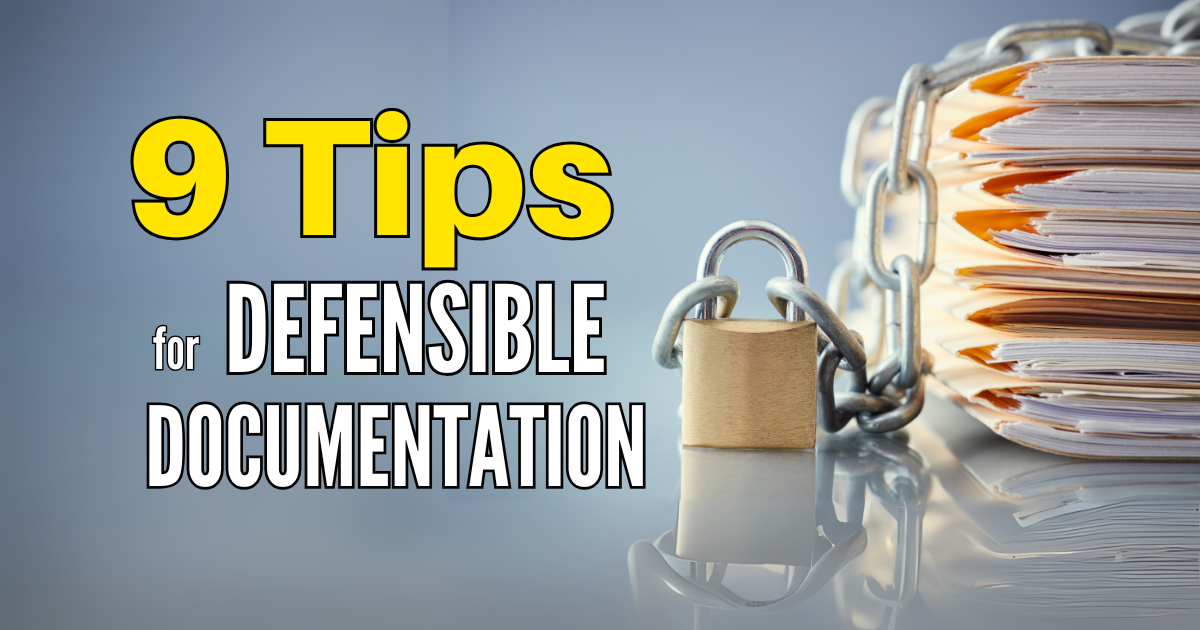9 Tips for Defensible Documentation in Physical Therapy
Understand how to create defensible documentation that ensures medical necessity, prevents claim denials, and supports skilled therapy services. Includes actionable tips, key questions, and tools like HelloNote to streamline the process

If you’ve ever asked a therapist what their least favorite part of the job is, the answer is often unanimous: documentation. While it may feel like a tedious task, proper documentation is more than just a box to check—it is a critical component of patient care and professional practice. For physical therapists, the ability to produce defensible documentation can make the difference between seamless reimbursement and costly claim denials.
What is Defensible Documentation?
Defensible documentation goes beyond simply recording a patient’s story. It must demonstrate medical necessity, justify the need for skilled therapy services, and ensure that all notes are detailed enough to withstand scrutiny from auditors or legal reviews. Inadequate documentation can result in denied claims, compliance issues, and even legal challenges.
To create defensible documentation, therapists must ensure that their notes:
- Reflect the patient’s story and their functional limitations.
- Justify why skilled intervention is necessary.
- Provide clear evidence of medical necessity.
Why is Defensible Documentation Important?
According to the APTA, defensible documentation is essential for several reasons:
- It serves as a detailed record of the patient’s care, including their diagnosis, treatment plan, and progress.
- It communicates the therapist’s expertise and the medical rationale behind their interventions.
- It justifies that therapy services were medically necessary.
- It acts as a legal record of interactions between the patient and therapist.
- It facilitates continuity of care by providing other healthcare providers with the necessary information for ongoing treatment.
Key Questions to Address in Documentation
When creating defensible documentation, therapists must answer these two critical questions:
- Why does the patient need physical therapy services now?
- Explain the onset of the condition, symptoms, or exacerbation that led to the therapy visit.
- Include relevant medical and psychosocial factors affecting the patient’s presentation.
- Ensure that the functional history aligns with the current impairments and limitations.
- Why does the patient require skilled PT services?
- Provide proof that the diagnosis or impairments require the expertise of a licensed therapist.
- Document the objective tests, measures, and education provided to demonstrate why the treatment cannot be performed safely or effectively by non-skilled personnel.
9 Tips for Defensible Documentation
According to Rehab Management, adhering to these nine guidelines can help therapists create defensible notes and avoid claim denials:
- Ensure Legibility
- All documentation must be clear and easy to read. Use digital documentation tools if handwriting is difficult to read.
- Support the Diagnosis
- Clearly link the diagnosis or evaluation findings to specific functional limitations and justify the need for skilled rehabilitation.
- Outline the Plan of Care
- Include measurable goals, expected frequency, and duration of therapy based on objective findings.
- Detail Time Spent
- Accurately document the time spent on procedures or modalities, ensuring it aligns with billing codes like the 8-minute rule.
- Track Patient Progress
- Regularly update notes with the patient’s progress or reasons for lack of improvement to justify continued therapy.
- Include Therapist Identification
- Sign each note with the therapist’s name and professional designation to ensure accountability.
- Incorporate Patient Feedback
- Add subjective input from the patient or caregiver regarding their progress, concerns, or unusual events.
- Justify Billed Units
- Clearly show how the billed units match the documented treatment.
- Summarize in Discharge Notes
- Provide an objective comparison of the patient’s initial evaluation and their final session.
Challenges Therapists Face with Documentation
Despite the importance of defensible documentation, many therapists find it overwhelming. Between managing extensive caseloads and addressing the individual needs of patients, documentation often becomes an afterthought. This can lead to rushed or incomplete notes, increasing the risk of claim denials.
How Technology Can Help
Tools like HelloNote streamline the documentation process, ensuring that therapists meet defensibility standards without added stress. With customizable templates, automated prompts, and built-in compliance checks, therapists can focus on delivering quality care while maintaining accurate records.
Conclusion
Defensible documentation is not just about satisfying insurance requirements—it’s about delivering quality care, communicating effectively with other healthcare providers, and protecting yourself as a professional. By following the nine tips outlined above and addressing the key questions, therapists can ensure that their notes are thorough, accurate, and defensible.
For those looking to simplify the process, tools like HelloNote can help reduce the administrative burden, enabling therapists to focus more on their patients and less on paperwork. Documentation may not be the most enjoyable part of the job, but with the right approach and tools, it doesn’t have to be overwhelming.

